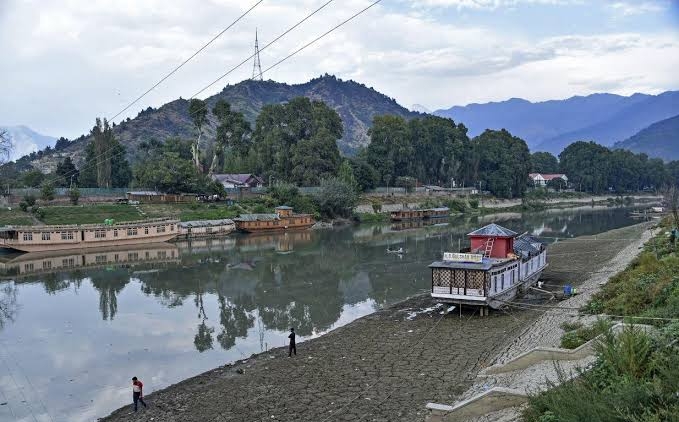Srinagar: The impacts of climate change have been already altering Earth’s ecosystems, and these changes are projected to accelerate significantly in the coming decades due to the continued release of greenhouse gases.
This ongoing process is expected to lead to profound transformations in global climate patterns, affecting everything from weather extremes to biodiversity, and human livelihoods.
The web application ‘Future Urban Climates’ developed by Matt Fitzpatrick at the University of Maryland Center for Environmental Science – Appalachian Lab, with coding support provided by Teofil Nakov, answers the questions like, “What will the climate of the future be like where I live? How hot will summers be? Will it still snow in winter? And perhaps how might things change course if we act to reduce emissions?”
The prediction for Srinagar suggests that, under the current high emissions scenario, summers are projected to warm by 5.4°C and winters by 5.6°C by the year 2080.
It also forecasts that summers will be 22.4% wetter and winters 4.7% wetter.
With each passing decade in a warming climate scenario, Kashmir is likely to experience reduced snowfall, which could directly affect the glaciers.
In Jammu City, under the current high emissions scenario, the application predicts that summers will be 4.7°C warmer and 36.5% wetter, while winters will be 5.3°C warmer and 10.4% wetter.
Not only this, Srinagar’s climate could resemble that of Ramban and Reasi districts.
Therefore, visiting Ramban and Reasi would offer a preview of what Srinagar’s climate might be like in 2080.
Similarly, Jammu’s climate may resemble the desert conditions of Churu in Rajasthan.
Under the reduced emissions scenario – similar (but still higher) to those that we might expect under the Paris Climate Accord, the predictions are still concerning.
In this scenario, Srinagar summers are projected to warm by 1.9°C and become 9.7% wetter, while winters are expected to warm by 1.6°C with a slight 0.3% increase in precipitation. Meanwhile, Jammu summers are expected to warm by 1.4°C and become 30.1% wetter, while winters are expected to warm by 1.5°C with a 7.5% increase in precipitation.(KNO)











